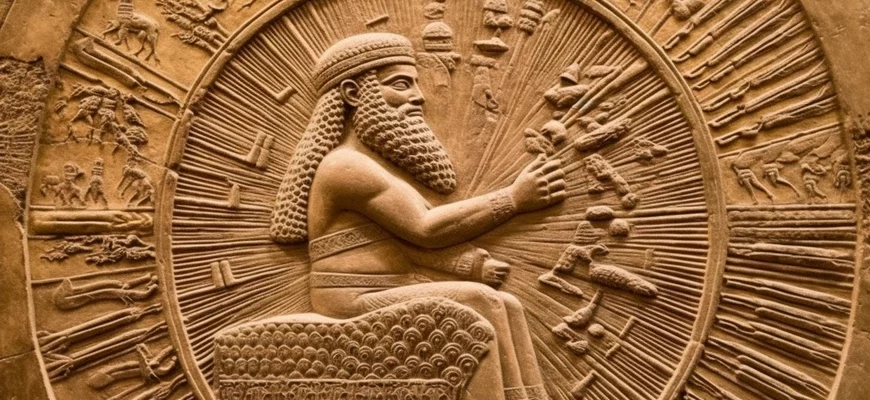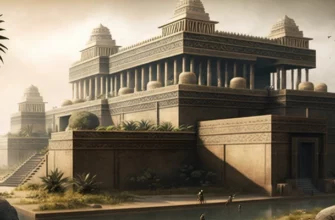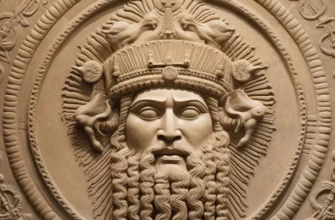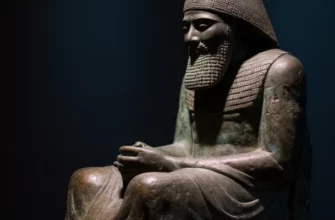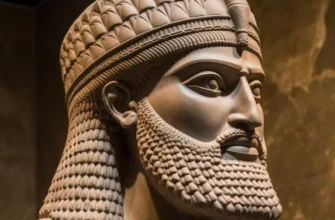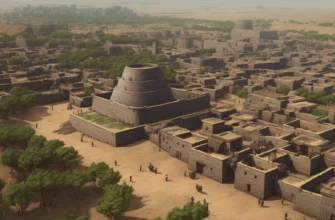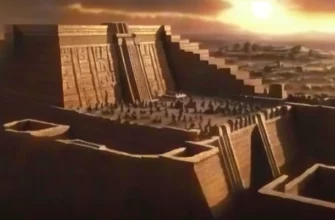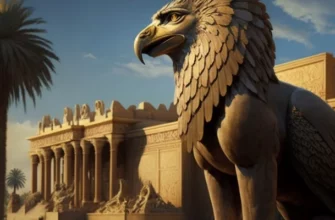Priests in ancient Mesopotamia not only performed religious rituals, but also possessed knowledge of astronomy and mathematics. They observed the movement of planets and stars, studied the cycles of the Moon, Sun, and other celestial bodies. Priests also developed mathematical methods for solving practical problems, such as eliminating water pollution. Their knowledge and discoveries had a significant impact on the development of science. Today, we know a lot about celestial bodies and mathematics thanks to the research of Mesopotamian priests.
- The importance of knowledge of astronomy and mathematics for priests
- The role of priests in ancient Mesopotamia
- Description of the role of priests in ancient Mesopotamia
- The influence of religion on the development of astronomy and mathematics
- Priests’ knowledge of astronomy
- Description of the priests’ knowledge of celestial bodies and their movements
- Examining methods of studying celestial bodies in ancient Mesopotamia
- Priests’ knowledge of mathematics
- Description of the mathematical knowledge of priests
- The influence of priests’ research on science
- Highlighting the achievements and discoveries of priests in the fields of astronomy and mathematics
- Examples of priests’ research
- Description of specific research by priests in the fields of astronomy and mathematics
- Considering the impact of the priests’ research on modern science
The importance of knowledge of astronomy and mathematics for priests
For priests in Mesopotamia, knowledge of astronomy and mathematics was extremely important because it allowed them to predict events, determine the calendar, and control the rhythm of people’s lives. Priests observed the movement of planets and stars, studied the cycles of the Moon, Sun, and other celestial bodies, and took this knowledge into account when developing the calendar. They also used mathematics to solve practical problems, such as eliminating water pollution. Knowledge of astronomy and mathematics allowed priests to gain respect and influence, which in turn secured their social status in society.
The role of priests in ancient Mesopotamia
In ancient Mesopotamia, priests played an important role as religious leaders and intermediaries between the gods and humans. They performed religious rituals and made sacrifices to satisfy the needs of the deities. Priests also had a significant influence on political and social decisions, as they were considered the bearers of divine will. They were also the heads of educational institutions where they taught skills and knowledge that allowed the people of Mesopotamia to develop as a society. In addition to their religious functions, priests also served as doctors, scientists, and judges. Their knowledge and influence gave them significant status in society and allowed them to develop science, art, and architecture.
Description of the role of priests in ancient Mesopotamia
Priests in ancient Mesopotamia performed important religious and cult duties. They were intermediaries between the gods and humans and played a significant role in the political and social life of society. Priests presided over religious ceremonies and sacrifices that took place in temples and shrines, and served as doctors, scientists, and judges. They had a significant influence on the development of science, art, and architecture, as they were the heads of educational institutions and preserved knowledge of astronomy, mathematics, and other sciences. Priests also monitored compliance with religious prohibitions and promoted moral values among the population. All this made priests some of the most influential people in ancient Mesopotamia.
The influence of religion on the development of astronomy and mathematics
Religion had a huge influence on the development of astronomy and mathematics in Mesopotamia. Priests believed that the sky and stars were living beings that influenced human destiny. Therefore, they focused their observations on astronomical phenomena in order to predict natural disasters, determine the times of sowing and harvesting, and set holiday dates.
Priests also studied mathematics, as it was necessary for the performance of their religious duties. They created a number system based on sixty, which became the basis for calculations of angles and time. In addition, they developed geometry, which allowed them to perform accurate calculations for the construction of temples and other buildings.
Religious ceremonies and sacrifices also made it possible to collect a significant amount of data on astronomical phenomena, which was used to develop an astronomical calendar. This calendar ensured the accuracy of determining days, months, and years, which allowed religious ceremonies to be held on time and ensured the orderliness of society. All these achievements were made possible by the influence of religion on the development of astronomy and mathematics in Mesopotamia.
Priests’ knowledge of astronomy
Mesopotamian priests had considerable knowledge of astronomy. They studied the movements of the planets, stars, and moon, and observed their movements in the sky. The priests were also able to predict solar and lunar eclipses, determine the time of day and year, and develop calendars. Their knowledge of astronomy was important for religious rituals and cult practices, as well as for agriculture and navigation on water and land.
Description of the priests’ knowledge of celestial bodies and their movements
The priests of Mesopotamia were quite knowledgeable about celestial bodies and their movements. They studied the planets, stars, moon, and sun and made records of their movements. Using these records, they developed calendars, predicted eclipses, and determined the time of day and year. Priests paid attention to certain star configurations, which they associated with various natural phenomena, such as floods or droughts. They also observed the movement of celestial bodies to determine the ideal time for religious ceremonies and cult practices. The priests’ knowledge of celestial bodies and their movements played an important role in the religious and cultural life of Mesopotamia.
Examining methods of studying celestial bodies in ancient Mesopotamia
In ancient Mesopotamia, priests studied celestial bodies and their movements using various methods. One of the main methods was observation. Priests used their own eyes to determine the position and movement of celestial bodies. They also used instruments such as astrolabes and gnomons for more accurate measurements.
Another method used by priests was mathematical analysis. They made records of the movement of celestial bodies and performed various calculations to understand patterns and predict future movements.
Priests also used astronomical tables and calendars. They collected data on the position and movement of celestial bodies and entered this data into their tables and calendars for further analysis and use.
In general, the methods of studying celestial bodies in ancient Mesopotamia were very advanced and diverse. Priests used both direct observation and mathematical analysis, as well as various instruments and tables to study and explore celestial bodies.
Priests’ knowledge of mathematics
The priests of ancient Mesopotamia had considerable knowledge of mathematics. They used a complex number system based on the hexadecimal system and studied geometry and algebra. Priests were known for their ability to make accurate calculations and predictions. They developed methods for solving complex mathematical problems that are still used today, such as quadratic equations and multiplication tables. In addition, priests created calendars using complex mathematical calculations to determine the exact dates of celebrations and agricultural work.
Description of the mathematical knowledge of priests
The mathematical knowledge of the priests of Mesopotamia was quite advanced for its time. They used a complex number system based on the hexadecimal system, which allowed them to perform complex mathematical calculations with precision. The priests understood the concepts of geometry and algebra, which they used to solve various problems. They created multiplication tables and developed methods for solving quadratic equations. Priests also created calendars, using mathematical calculations to determine the exact dates of celebrations and agricultural work. All this mathematical knowledge helped priests to effectively manage their society and study the natural phenomena that surrounded them.
The influence of priests’ research on science
The research of the priests of ancient Mesopotamia in the fields of astronomy and mathematics had a huge impact on the scientific progress of that time. Priests developed calendars, used astronomical knowledge to predict natural phenomena, and studied astrology. They also made significant contributions to mathematics by developing a system of numerals, formulas for calculating area and volume, and solving complex problems in trade and agriculture. All of these achievements by the priests became the foundation for further scientific development in ancient Mesopotamia and other civilizations.
Highlighting the achievements and discoveries of priests in the fields of astronomy and mathematics
The priests of ancient Mesopotamia made a significant contribution to the development of astronomy and mathematics. They studied the movement of planets and stars, measured time, created calendars, and used mathematical knowledge in trade and agriculture. Among their achievements were the invention of time counting and measuring the length of the day, the discovery of the connection between the phases of the moon and the tides, and the development of a solar calendar accurate to 1/6 of a day. The discoveries and achievements of the priests became the basis for the further development of science in Mesopotamia and influenced the development of science in general.
Examples of priests’ research
Mesopotamian priests made a significant contribution to the development of astronomy and mathematics. For example, their observations made it possible to calculate the calendar and begin studying the stars and planets. They also used geometry to measure land and construct buildings. The priests’ research made it possible to solve practical problems, such as calculating the time of sowing and harvesting, which was very important for society. Many of their discoveries remain relevant today and form the basis of modern knowledge in these fields of science.
Description of specific research by priests in the fields of astronomy and mathematics
One of the most famous studies by priests in the field of astronomy is “Enuma Anu Enlil,” which means “The Wheel of the Divine Sky and Earth.” It was a table containing data on the positions of the planets in the sky at different points in time. The priests used this data to predict the future movements of the planets and the starry sky.
Another example is the “Complete Circle,” a collection of tablets containing various mathematical formulas and algorithms for solving various problems, such as calculating the area of a rectangle, triangle, or circle.
The priests also created the “Star Catalog,” which contained information about various stars and their positions in the sky. This catalog was used to create an astronomical calendar and predict various astronomical events, such as solar and lunar eclipses.
The priests also developed a number system based on 60, which became the basis for the modern system of weights and measures and was also used to calculate time and angles. They also created multiplication and division tables to help perform mathematical operations.
All these achievements enabled the priests of Mesopotamia to become the first in the history of astronomy and mathematics and to make a significant contribution to the development of science and technology.
Considering the impact of the priests’ research on modern science
The impact of the research of the priests of ancient Mesopotamia on modern science cannot be overestimated. They made a significant contribution to the development of astronomy and mathematics, which are currently used in various scientific fields. The priests’ knowledge of the movement of celestial bodies and mathematical calculations became the foundation for the development of scientific research in fields such as astrophysics and space geodesy. In addition, many mathematical concepts discovered by priests, such as knowledge of numbers and geometric shapes, are used in modern technologies, for example, in the field of computer graphics and information encryption.
The legacy of the ancient priests of Mesopotamia in the fields of astronomy and mathematics is significant. Their number recording systems and mathematical formulas are still used today. The achievements of the priests in the study of celestial bodies were used by later scientists to develop modern astronomy. In addition, the mathematical knowledge of the ancient priests was used to develop geometry and algebra, which are the basis of modern sciences of space and numbers. All this testifies to the significant contribution of the priests of Mesopotamia to the development of science and technology in human history.
